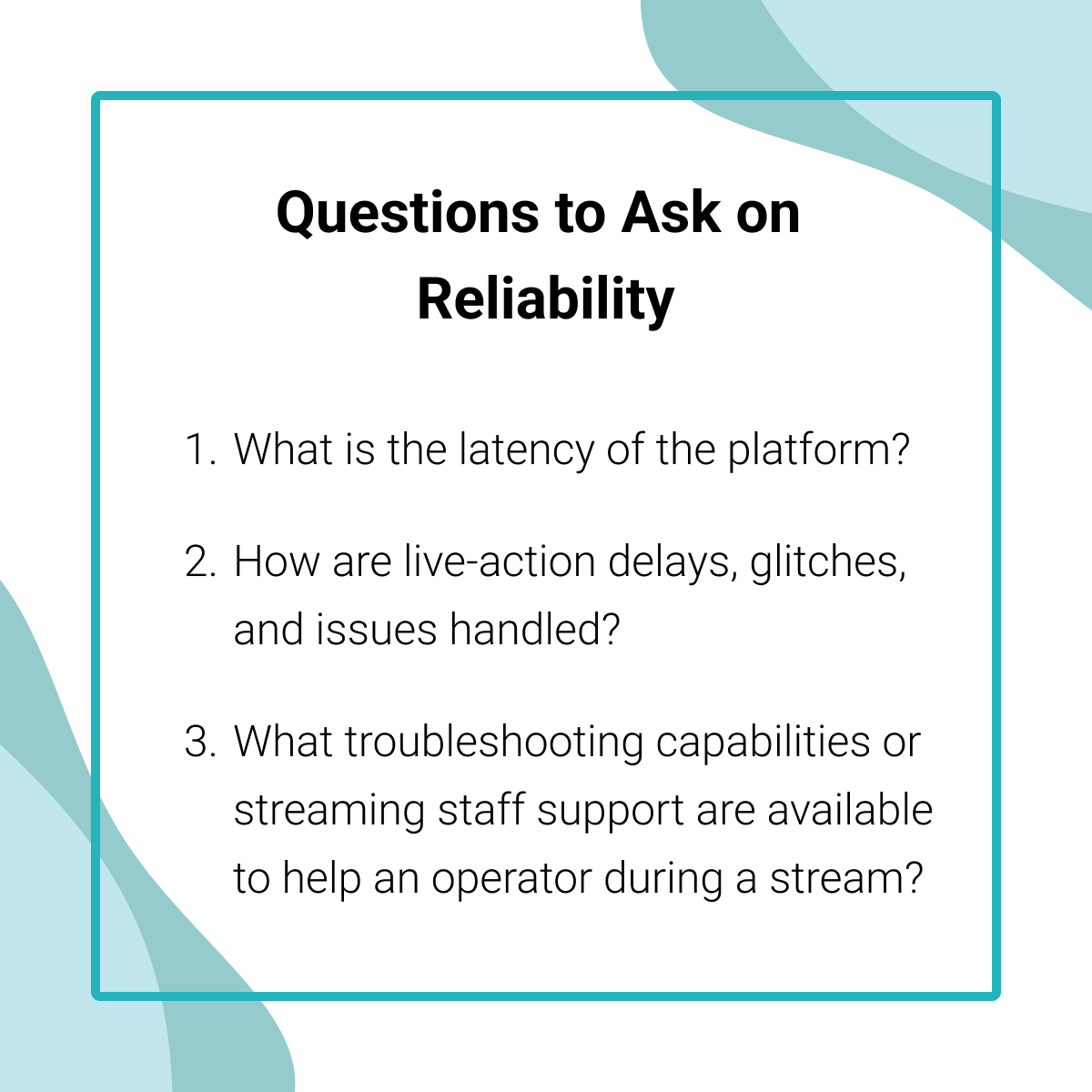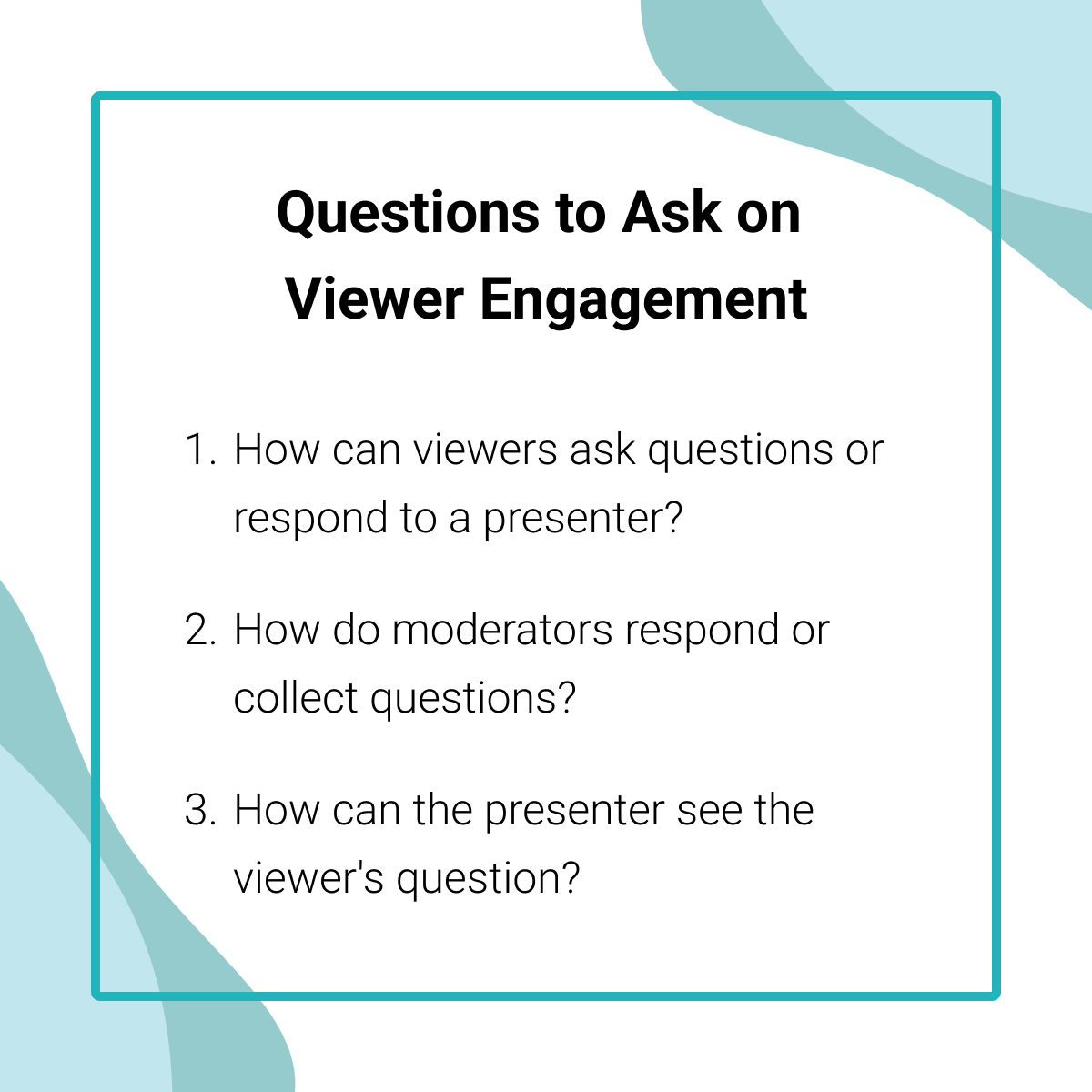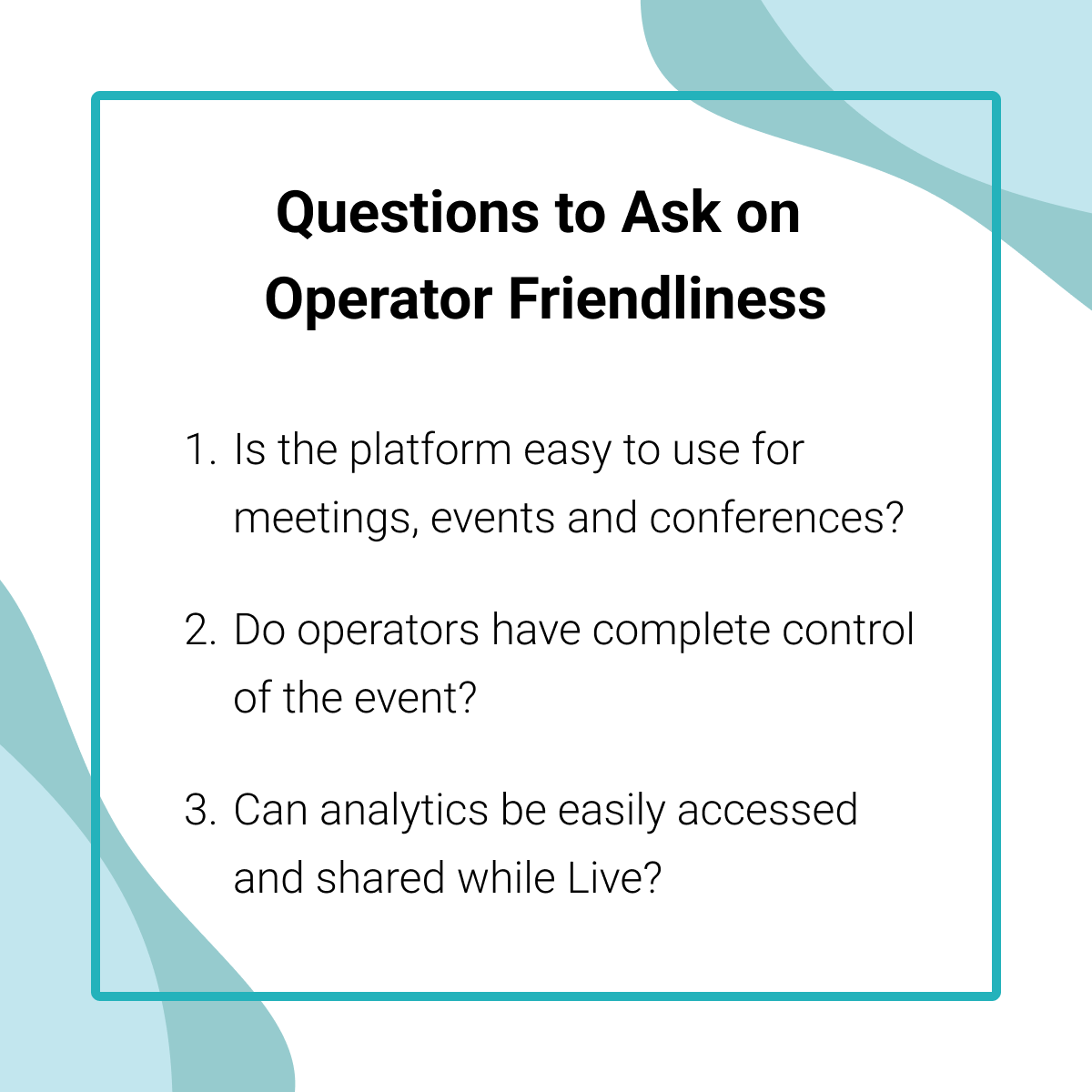
Stop Making your Streaming Partner an Afterthought
Live streaming video is de rigueur in nearly every industry now, because live streams allow speakers and audience members to engage and connect with one another, from anywhere in the world. Live video streaming helps us distribute our major live events, run our meetings in real-time, and enables viewers to engage with both critical work commitments and exciting entertainment content from the comfort of their own homes.
The efficiency and accessibility of live streaming video is also certainly why we’re seeing an uptick in hybrid events, which combine both an in-person and online element. (Think: a conference where viewers tune in virtually, but presenters share from a stage.) As the world continues to shift to become even more remote, the need for reliable live streaming platforms will continue to grow.
However, all too frequently, agencies don’t consider their streaming provider in the initial planning stages of a live stream event.
But, if you want a great live stream event, it’s always important to consider three key components of a live streaming platform: reliability, interactivity, and operator friendliness.
Real-time reliability
First, perhaps the most important consideration of all to make when considering a live streaming platform is the reliability.
The expectation and demand of streaming viewers today is Netflix quality video, without any buffering or lag. However, not all streaming platforms can deliver that perfect picture, without delays or glitches. If you want the best, most engaging streaming experience, it’s critical to choose a reliable platform with low-latency capabilities.

A low-latency streaming platform reduces the data to video delay to the sub-five-second range. This allows presenters and audience viewers both to engage with a live streaming event in real-time, which will improve overall experience.
Also in terms of reliability, it’s important to consider how your streaming platform deals with live-action delays, glitches, and issues. What troubleshooting capabilities or streaming staff support are available to help an operator during a stream? After all, glitches and feedback delays aren’t only annoying, they can also make it difficult for attendees to understand what’s going on – and for presenters to get their point across.
Or, perhaps the best way to deliver a lag-free “live” stream to your intended audience is to pre-record an event, and distribute the video after editing. There’s no right answer here, only the best answer for your enterprise’s needs or the demands of a particular event.
But, no matter how you decide to stream an event, always consider your platform’s reliability, latency, and troubleshooting options, well before the big day.
Engagement and interactivity
Today, it’s not enough to have a reliable, crystal-clear live stream event. In order to be truly successful, a live streaming platform also needs to provide opportunities for viewers to easily engage with each other and with the content. Another way to think of this is the platform’s interactivity level, in terms of accessibility, viewer engagement, and chat.

In terms of accessibility, it’s important to consider questions like: will the video player cover all the bases, including desktop, mobile, and 360º video? Does this live stream need to be accessed across multiple platforms, like Facebook, YouTube, and Twitch? Or is this an internal event we want recorded and edited for future distribution and reference?
With viewer engagement, it’s helpful to consider questions like: how can viewers ask questions or respond to a presenter? How do moderators respond or collect questions? How can the presenter see the viewer’s question?
Finally, the third component to audience engagement revolves around the chat box system. Consider: will attendees be able to chat with each other during the event? Are there live chat feeds? Where are the live chat feeds displayed? Is there an option for a unified chat box that pulls chats from multiple destinations available?
All of these questions – and their answers – should be considered before choosing a live streaming platform or planning a live stream event. By zeroing in on the interactions you most want attendees to have, you can ensure the most successful streaming event.
Operator friendly
Finally, one more factor to consider when choosing your streaming video platform or planning a big event is the level of operator friendliness. Live stream operators are under enormous pressure to deliver a pitch-perfect performance every single stream.

In order to take some of the pressure off live stream operators, especially if your enterprise frequently uses live streaming for meetings, events, and conferences, finding an easy-to-use, reliable live streaming platform is key.
And in addition to ease of use, a live streaming platform should also allow the operator control of the streaming event. When operators have complete management of all live streaming settings and analytics like DRM, security, transcoding, instant video archives, real-time stats, and access control, the operator and the event is best set up for success.
Live streaming, done right
Live streaming is here to stay, but live events can be stressful and unpredictable. Make life easier on your operators, and ensure the best viewing experience possible, by selecting a live streaming platform that’s reliable, interactive, and operator-friendly.
